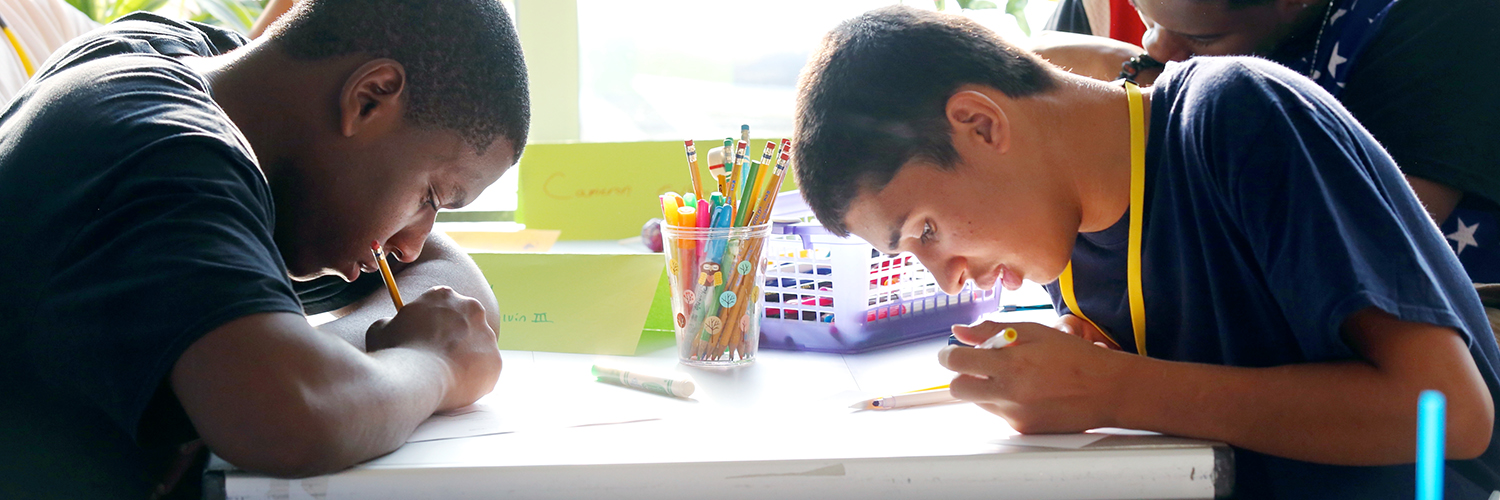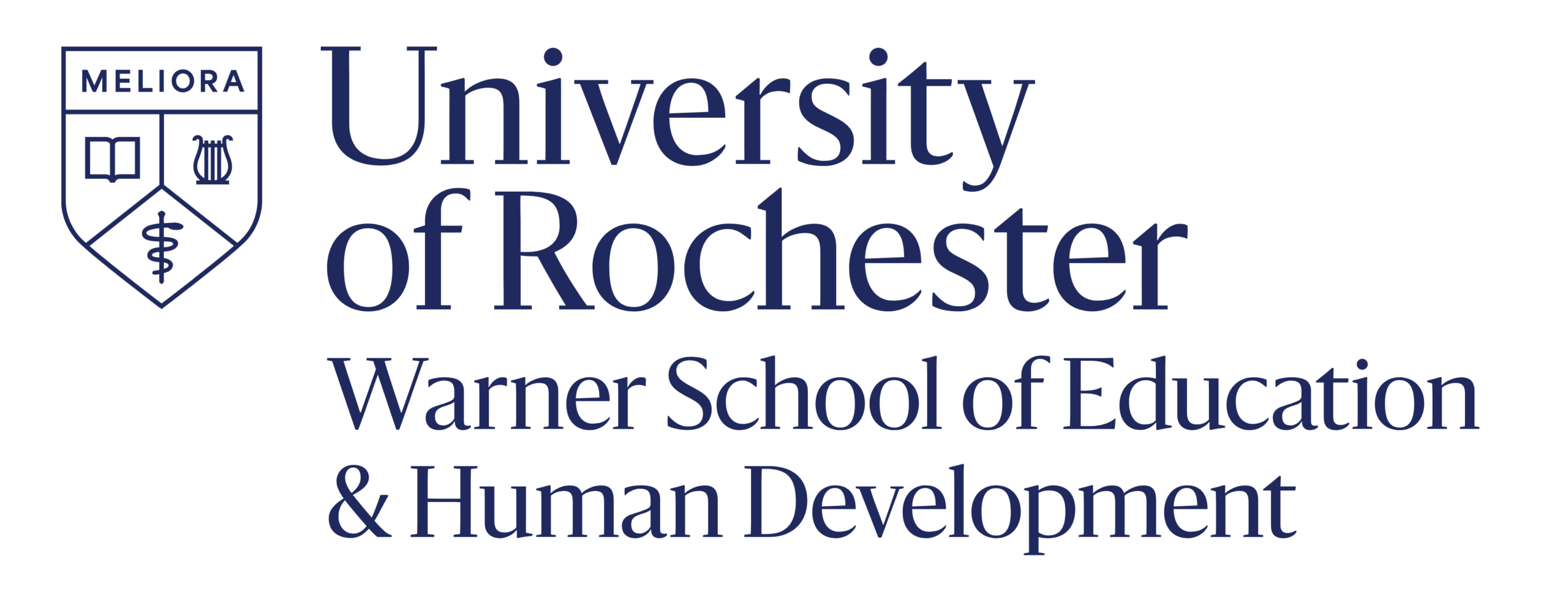
Videos
The partnership between the University of Rochester and East Upper and Lower is an educational reform model that begins with culture change. At the UR-East EPO (Educational Partnership Organization), we changed everything, all at the same time. From adding more social and emotional supports for students, to implementing a new approach to relationships, to rewriting curriculum, to reconnecting the school to its community of parents and neighbors, to numerous other initiatives, East is in the midst of a major and unique turnaround effort.
Now that the EPO has been in place for over three years, the shift is becoming more apparent. A recent survey of students placed trust in teachers at 98 percent, and in staff and administrators at 100 percent. This trust connects directly to some of the positive outcomes we are beginning to see: increased attendance, ELA and Math scores, graduation rates, and family engagement; decreased suspensions, behavioral incidents, and dropout rates.
East has been featured in videos produced by the University and media outlets. In addition, CUES sat down with teachers, students, administrators, and staff to talk about the lessons they’re learning as they participate in this comprehensive project. The videos featured here share their successes, their struggles, and their plans going forward so that others who are interested in urban education reform may learn from their insights.
How a university-school partnership transforms school culture
In 2015, the University of Rochester and East High School (Rochester, NY) entered into a unique partnership to transform East – the UR-East EPO (Educational Partnership Organization). Six years later, both partners have realized significant change in school culture, student outcomes, and university approach.
Higher graduation rates, improved student outcomes, and increased attendance: this video celebrates the transformative 10-year journey of the University of Rochester-East Educational Partnership Organization (EPO) and expresses deep gratitude for a decade of collaboration and shared success. As the formal East EPO concludes in June 2025, members of the East community reflect on a decade of growth, personal transformation, and enduring relationships built on trust, care, and shared commitment.
Remaking East: The Community's School
Rochester Review, November 2017
University of Rochester
How a University Helped Save a Failing High School
For full-size video and captions, see Chronicle of Higher Education, May 2017
Lessons Learned from a Curriculum Overhaul
In collaboration with the University of Rochester, the East Educational Partnership Organization (EPO) embarked on a comprehensive rewrite of its entire school curricula. This video documents the remarkable evolution of curriculum development within the EPO, explores the intricacies of the rewriting process, and reveals the valuable lessons acquired throughout the journey.
Community Schooling
Community schools are places where students, their families, community agencies, teachers, administrators and staff work together to provide support for all stakeholders. This video tells the story of how East High in Rochester, New York has become a community school from the perspectives of East staff, administrators, students, parents, and UR faculty. Their reflections can inform other schools seeking to collaborate with the communities they serve.
Academics: Curriculum
When East and the University began their partnership in 2015, a major aspect of the transformation plan was to redesign curricula in every department, at every level. By utilizing research, professional learning focused on curriculum writing, the Understanding by Design (UbD) framework, and a model led by teachers working as coaches, East took on a multi-year endeavor to write, implement, reflect, and then revise curricula that puts students at the center of learning while also increasing rigor. In this video, several East teachers, coaches, and East’s Chief Academic Officer describe their curriculum development process and candidly reflect on the experience
Curriculum-embedded Performance Tasks
In redesigning curriculum at East, a central focus was to make learning more meaningful and motivating to students. East teachers are creating instructional units that culminate in presentations of student work – at school, after school, and in the local community. In this video, East’s Chief Academic Officer explains the purpose behind and student response to these performance tasks, which are working their way into curriculum across disciplines at East.
Educational Research at East EPO
The partnership between the University of Rochester and East High has provided everyone involved with a unique opportunity to connect research to practice in a dynamic, authentic way. In this video, we hear teachers and administrators at East who reflect on how they use research in their day-to-day practice and the resources they’ve found through their connection to the University of Rochester Warner Graduate School of Education and Human Development. University researchers also speak about their role in supporting the EPO effort, documenting the work, and how they aim to share findings with the community.
Ethnographic Research at East EPO
CUES Associate Director and Michael W. Scandling Professor of Education at the University of Rochester, Dr. Joanne Larson, a veteran ethnographer, has become involved as a member of the East community over the past four years. Ethnography is a type of qualitative research that relies on human relationships so that researchers can learn how members of a community make meaning. Students, parents, administrators, teachers, support staff – everyone at East has contributed in some way to Dr. Larson’s long-term ethnography. Her study, in collaboration with practitioners at East, has been presented at national conferences and appeared in scholarly research journals. In this video, Dr. Larson (and others explain) – by her own example – how ethnographers study communities, and how this work impacts change.
Distributed Leadership
East utilizes an innovative leadership structure which is unlike the more familiar, hierarchical model that locates responsibility and confidence in one or two administrators. The practice of distributed leadership is moving the school toward the idea that leadership roles are supported and shared among many individuals in the community. At East, leadership emerges from whomever is most knowledgeable for a given situation. Staff and administrators have learned to rely on each other to address critical problems as they emerge in the community. Distributed leadership expands accountability and voice to teachers, staff, students and families. This shift to a more horizontal and wider leadership structure too time for staff to learn and adopt. They talk about the experience in this video.
Teacher Leaders
As part of the distributed leadership model at East, teacher leaders teach at least one class as well as provide curricular and instructional support to their content area peers. Over that past three years, there has been an increasing number of teachers applying for and stepping into teacher leader positions. This expansion is a tribute to the power of the teacher leader role to implement instructional initiatives. Teacher leaders are responsible for coaching content area teachers, coordinating curriculum development, facilitating daily collaborative planning time (CPT), and leading “learning labs.” The teacher leaders ensure that the time, space, and collaborative practice is in place for effective peer to peer learning. In this video, teachers and administrators discuss their changing conceptions of leadership roles for teachers.
Family Group
As part of an approach to students’ social-emotional well-being, East implemented the Family Group structure into the daily schedule. Family Group is a 30-minute daily period where the same 10-12 students meet with the same two teachers, called “Carents,” all year and every year during their time at East. We have two videos on Family Group – one that explores theory and purposes and the other that describes the practices of implementing this structure.
Restorative Practices
One of the major initiatives at the UR-East EPO is the implementation of a Restorative Practices (RP) approach, which offers schools a productive way to reimagine culture. An increasingly acknowledged and employed approach to school discipline, restorative practices focuses on building relationships and repairing relationships when harm has occurred. This video features researchers, administrators, community members, and staff talking about the theories and practices involved in living and interacting within a restorative practices framework.
